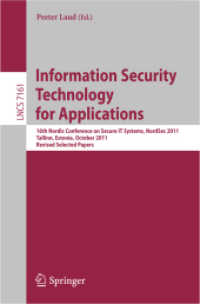- ホーム
- > 洋書
- > ドイツ書
- > Mathematics, Sciences & Technology
- > Biology
Full Description
This question is especially pertinent if we are thinking of information representation in the brain, since neuroscientists (or at least the vast majority of them) believe that the basic way in whieh patterns of information are encoded in the brain is as combinations of connections, selected in a variety of ways.








